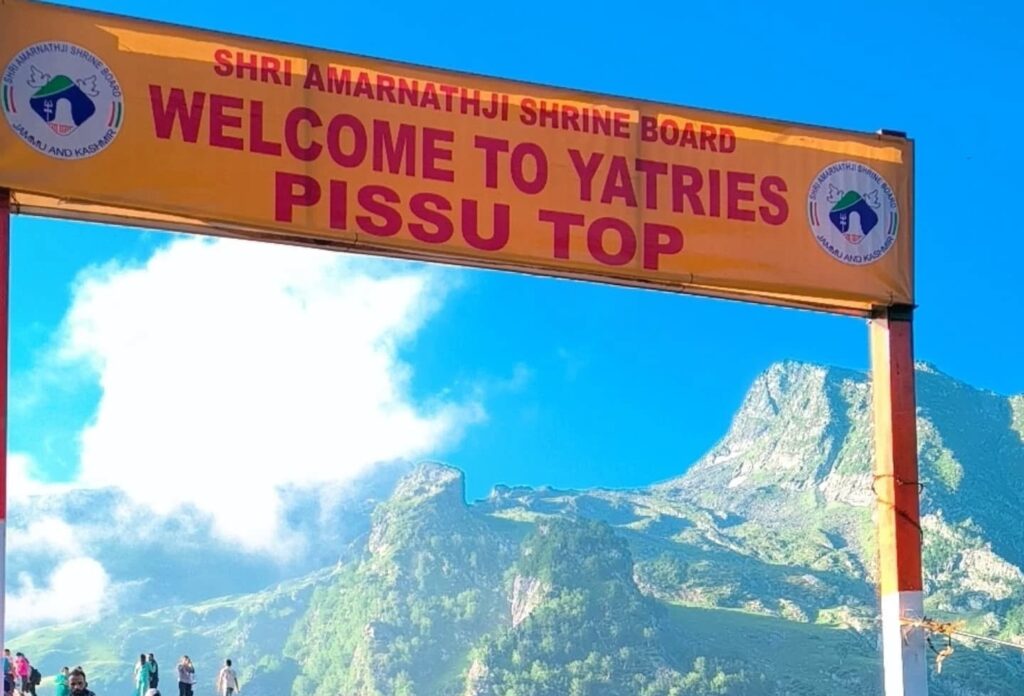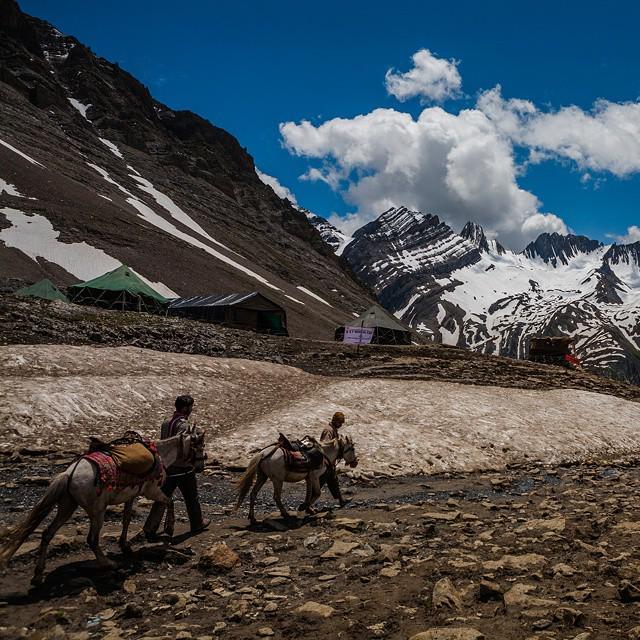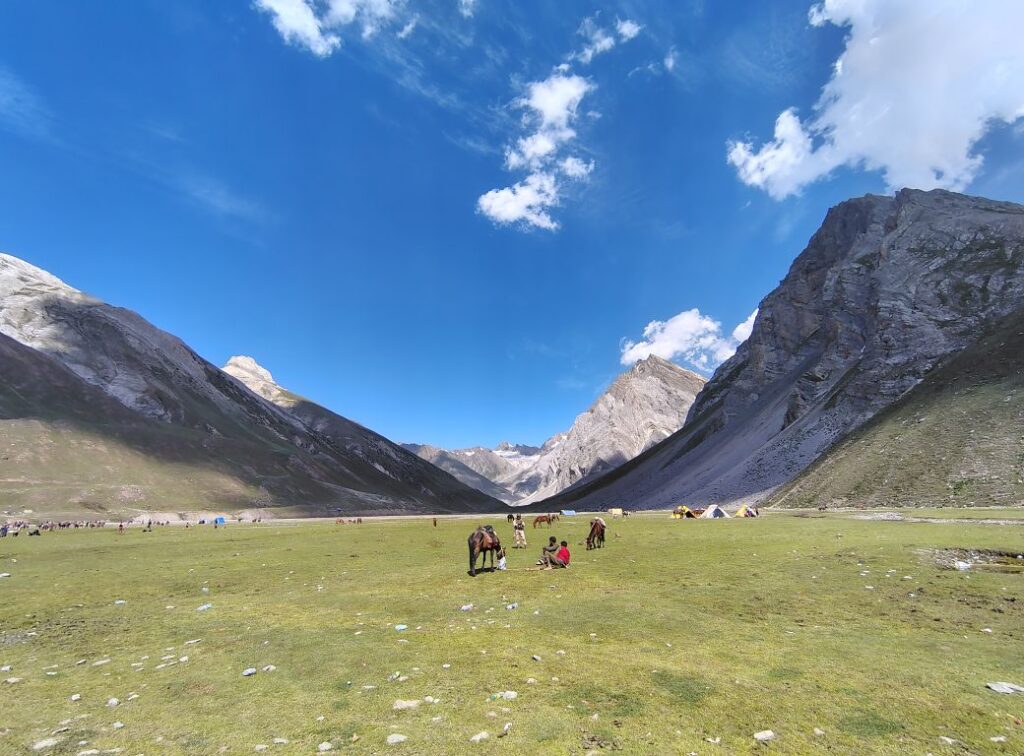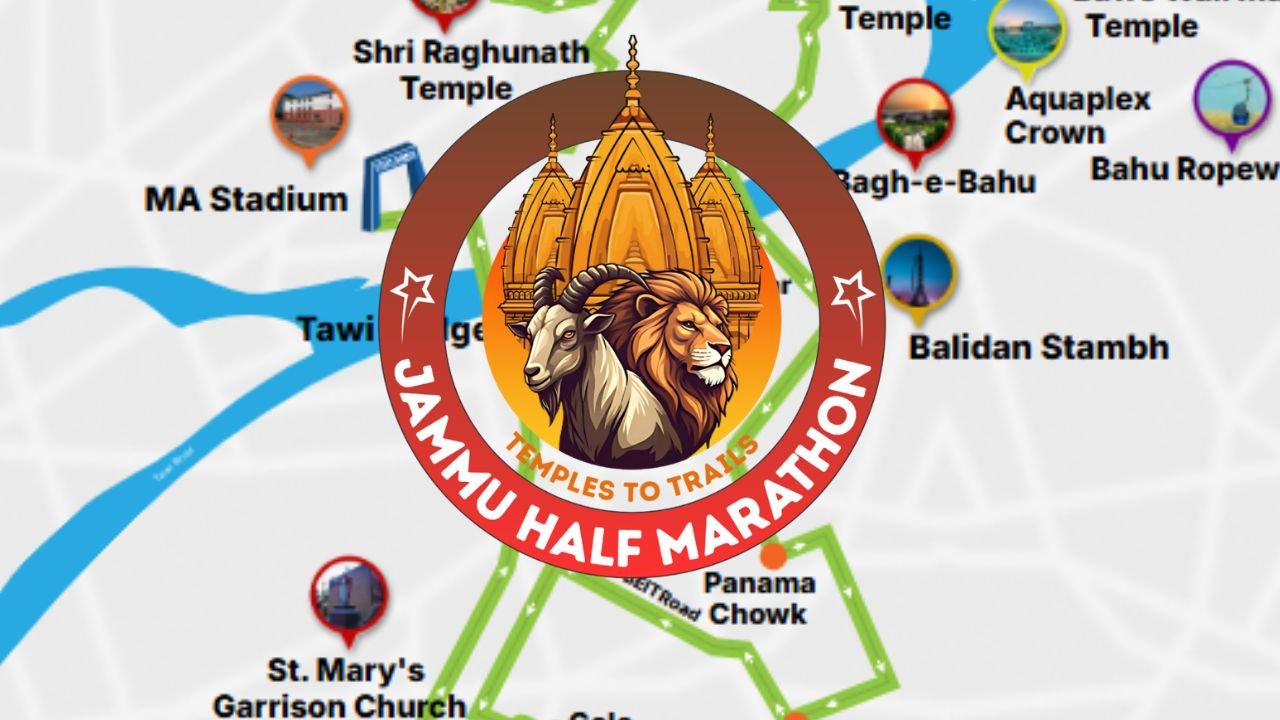The Amarnath Yatra, one of the most revered pilgrimages in India, is more than just a religious journey—it’s a breathtaking trek through the Himalayas infused with mythological tales and spiritual landmarks. Starting from Pahalgam, each stop on this sacred route carries divine significance tied to Lord Shiva and Goddess Parvati, offering a deeply enriching experience for devotees and trekkers alike.
- Starting Point: Pahalgam
- Total Distance: Approximately 47 kilometers (29 miles)
- Duration: Typically 3-4 days
- Key Stops: Chandanwari, Sheshnag, Panchtarni
- Scenery: Lush green forests, alpine meadows, streams, waterfalls, and snow-capped mountains
Yatra Itinerary (Pahalgam Route)
- Day 1: Travel from Jammu or Srinagar to Pahalgam
- Day 2: Trek from Pahalgam to Chandanwari (16 km)
- Day 3: Trek from Chandanwari to Sheshnag (14 km)
- Day 4: Trek from Sheshnag to Panchtarni, then to Amarnath Cave, and return to Panchtarni
- Day 5: Trek from Panchtarni to Baltal (9 km), then drive to Sonamarg (15 km)
- Day 6: Travel from Sonamarg to Srinagar
Below is a comprehensive guide to the top tourist attractions on the Amarnath Yatra route via Pahalgam, enriched with history, culture, and spiritual importance.
Pahalgam – The Beginning of the Amarnath Yatra
Located about 96 kilometers from Srinagar, Pahalgam is a scenic town nestled in the Anantnag district of Jammu & Kashmir. Surrounded by snow-capped peaks and dense pine forests, Pahalgam is not only a popular hill station but also the starting point of the traditional Amarnath Yatra route.
Mythological Significance
Legend has it that this is where Lord Shiva left behind his vahana (vehicle), Nandi, before continuing on his way to the Amarnath Cave to narrate the story of immortality—Amar Katha—to Goddess Parvati. This act marked the beginning of his journey to renounce all worldly attachments, giving Pahalgam its name, meaning “Village of the Shepherd.”
Chandanwari – The Moon’s Departure Point
Situated 16 kilometers from Pahalgam, Chandanwari is the next major halt on the Yatra. It serves as the starting point of the actual trek toward the Amarnath Cave.
Spiritual Belief
According to mythology, Lord Shiva released the moon from his head at this very spot. Known by the name Chandramauli, Shiva symbolically sacrificed the crescent moon he always wore, leaving it behind as a mark of his detachment from all things celestial. Hence, this place came to be known as Chandanwari.
The site is also famous for its snow bridges and glacial views, making it a scenic attraction for tourists.
Pissu Top – Site of Divine Victory
A few kilometers beyond Chandanwari lies Pissu Top, a place steeped in mythological importance.
Legend of the Battle
It is said that at this site, a massive battle ensued between the Devas (Gods) and Asuras (demons) for the privilege of being the first to have darshan (glimpse) of Lord Shiva in his cave. With Shiva’s divine intervention, the Devas emerged victorious. The heap of slain Asuras’ bodies is believed to have formed the mound we now call Pissu Top.

From here, the trek becomes steeper, offering panoramic views of the valley below.
Sheshnag – Home of the Celestial Serpent
Approximately 12 kilometers from Chandanwari, you’ll encounter Sheshnag Lake, a serene and mystical spot named after the mythical serpent Sheshnag, on whom Lord Vishnu rests.
Read also: Amarnath Yatra Accommodation | Where to Stay During Amarnath Yatra
Religious Belief
This is the place where Lord Shiva discarded the snake coiled around his neck, continuing his renunciation of worldly symbols. The turquoise-blue lake surrounded by towering mountains is believed to be the dwelling place of Sheshnag himself.

Besides its mythological value, Sheshnag is a visual paradise and a favorite camping spot for Yatris.
Mahagunas Top – Gateway to the Skies
Next on the route is Mahagunas Mountain, located about 4 to 5 kilometers from Sheshnag, at an impressive altitude of 14,000 feet.
Spiritual Connection
At this point in his journey, Lord Shiva is believed to have left behind his beloved son, Lord Ganesha. With each step, Shiva was shedding worldly ties, and leaving Ganesha was a significant act of detachment.

Mahagunas is known for its rugged terrain, chilling winds, and scenic waterfalls, offering a truly high-altitude Himalayan experience.
Panchatarani
Roughly 6 kilometers from Mahagunas Top, Panchatarani lies at a height of 12,500 feet and is considered one of the most sacred stops on the Yatra.

Mythological Significance
Here, Lord Shiva is believed to have sacrificed the Panchabhutas—the five elements of nature: Earth, Water, Fire, Air, and Space. This act signified his final stage of renunciation before entering the cave.
The name Panchatarani comes from the confluence of five rivers, believed to flow from the matted hair (jata) of Lord Shiva. These icy streams add to the mystique and spiritual energy of the region.
Amarnath Cave – The Final Destination
At last, after trekking across glaciers, rivers, and rocky terrain, pilgrims reach the sacred Amarnath Cave, situated at an altitude of 13,500 feet.
Divine Presence
This natural cave, approximately 100 feet long and 150 feet wide, is the site of the ice Shiva Linga, which forms naturally every year. It is here that Lord Shiva finally narrated the Amar Katha to Goddess Parvati, revealing the secret of eternal life.
To preserve the sanctity of the tale, Shiva left behind everything—including his companions, ornaments, and symbols—before entering the cave, making this site the spiritual climax of the entire pilgrimage.
Experience Beyond Religion
While the Amarnath Yatra is deeply rooted in Hindu beliefs, its tourist appeal extends beyond religious sentiment. The trail is a rich tapestry of Himalayan biodiversity, mythological legends, spiritual energy, and raw natural beauty.
Adventure seekers, nature lovers, and photographers find the route equally mesmerizing, with its snow-capped mountains, crystal-clear lakes, alpine meadows, and glacier crossings.
Tips for Yatris and Tourists
- Acclimatize in Pahalgam for at least a day before beginning the trek.
- Carry warm clothing, energy snacks, and medical essentials.
- Respect local customs and religious sentiments.
- Check weather updates and register with the Shri Amarnath Shrine Board for safety and permits.
The Amarnath Yatra via Pahalgam is more than a spiritual journey—it’s a soulful experience that unites faith, nature, and adventure in a way few pilgrimages can. Each destination along the route—from Pahalgam to the holy cave—tells a powerful story from Hindu mythology, reminding pilgrims of the deep bond between Shiva and Parvati, and of the sacrifices involved in the pursuit of divine truth.
Whether you seek spiritual awakening or Himalayan grandeur, this journey offers a once-in-a-lifetime opportunity to touch the divine and embrace the extraordinary.
















